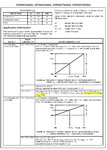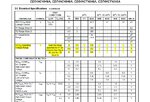JKJoy
Member level 1
Hi,
I have a communication circuit in which one section needs input at 1V for Logic 0 and 3.3V for Logic High. But the microcontroller outputs only 0V(low) and 5V(High).
Is there any simple solution to shift 0V to 1V and 5V to 3.3V ?
I found one level shifter with LP211, but looking for more simple solution.
Thanks
I have a communication circuit in which one section needs input at 1V for Logic 0 and 3.3V for Logic High. But the microcontroller outputs only 0V(low) and 5V(High).
Is there any simple solution to shift 0V to 1V and 5V to 3.3V ?
I found one level shifter with LP211, but looking for more simple solution.
Thanks


